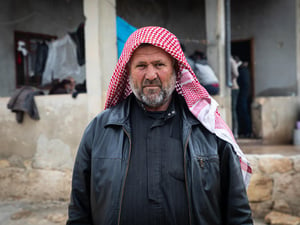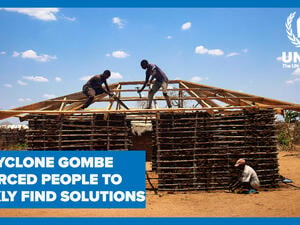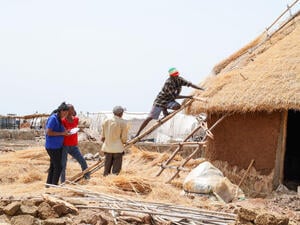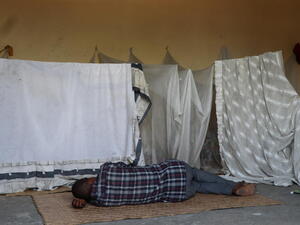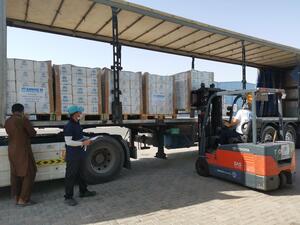One year on, quake-hit Pakistan works towards tentless terrain
One year on, quake-hit Pakistan works towards tentless terrain
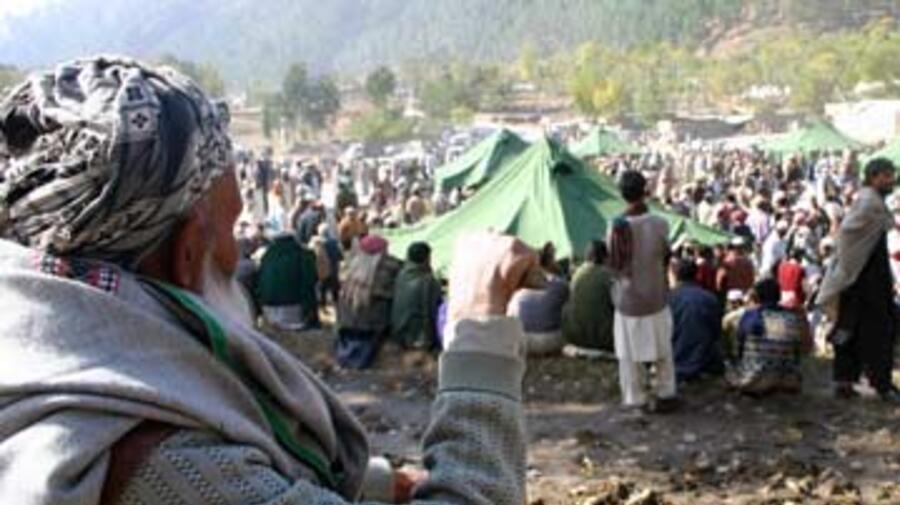
Quake survivors in Balakot, North West Frontier Province, gather to receive government compensation to rebuild their homes.
ISLAMABAD, Pakistan, October 9 (UNHCR) - A year after a devastating earthquake killed more than 73,000 people and left many more homeless in northern Pakistan, the needs on the ground have changed. "As we started the emergency relief, I wanted to see tents all over. Now at the early recovery phase, I want to see them all gone," said Lieutenant-General Nadeem Ahmed, deputy chairman of the Earthquake Reconstruction and Rehabilitation Authority (ERRA).
Tents are a good indication of how far Pakistan has come since the October 8, 2005 earthquake, which measured 7.6 on the Richter scale. With some 600,000 houses either damaged or destroyed, tents were in great demand - for the homeless and those afraid to sleep indoors for fear of aftershocks. UNHCR, one of the first agencies on the ground, distributed more than 21,000 tents.
But as tents started sprouting up everywhere, the need arose to organise and provide basic services for their inhabitants. Under the joint UN response, UNHCR took the lead for camp management and deployed emergency staff to help the Pakistan authorities set up relief camps.
Non-governmental organisations (NGO) provided services like health care, water, sanitation and education, while aid workers sensitised the community on hygiene issues. At its peak, UNHCR was supporting the authorities in 170 camps housing some 200,000 quake survivors in Pakistan-administered Kashmir and North-West Frontier Province (NWFP).
Last winter brought concerns of a second wave of deaths. UNHCR contributed 115,000 plastic sheets, 850,000 blankets, 38,000 mattresses and some 25,000 heaters/stoves, much of it to prepare the tents for the cold weather. With the onset of spring, camp dwellers started heading back to their villages. More than 140,000 people left the camps between April and August, many of them on UNHCR-sponsored transport.
"One of the main achievements in recent months is that we've made it easier for people to establish a home again," said Kilian Kleinschmidt, UNHCR's emergency coordinator in Pakistan. "Together with other agencies, we lobbied to revise the government's criteria for rebuilding houses from just steel and cement to also include traditional timber frames. In addition, NGOs are now allowed again to provide temporary shelter kits to the affected population in remote areas. Remaining tents in camps will be winterised so that nobody will have to face the winter in the cold."
Another useful tool has been a UNHCR-funded radio programme, titled "Hemat Javan Hai" ("The Will is Strong"), which seeks to answer commonly asked questions on where to get help, compensation issues and reconstruction guidelines. "The show has really helped to establish a dialogue between ERRA and the affected people," said Atif Baloch, programme manager at Power 99 FM, which produces the thrice-weekly show.
Quake survivors are getting more information to make informed decisions about return and reconstruction, but Lt-Gen Nadeem's dream of everyone moving into new and safer houses will still take time to realise. The government estimates that 25 percent of affected households have started rebuilding their homes.
In addition to the thousands who camp beside their homes as they rebuild, some 35,000 people remain in 43 relief camps in Kashmir and NWFP - vulnerable or landless people who cannot go home immediately. Among them are some 10,000 people who were relocated from areas affected by monsoon rains, floods and landslides, many of whom will be able to return in the coming weeks.
Meanwhile, winter is looming again. Recently, the International Federation of the Red Cross and Red Crescent Societies warned that some 400,000 quake survivors will spend the winter without permanent shelter. A report by the British NGO, Oxfam, said 1.8 million people are still living in intermediate shelters in the quake zone, pending the reconstruction of their homes.
The UN refugee agency handed over camp management responsibilities to the local authorities on August 31, but remains engaged in planning and capacity-building through its partnership with the Norwegian Refugee Council (NRC), which will take over full responsibility by the end of the year.
"We've been working with ERRA, through the inter-agency standing committee and agencies like Oxfam to adopt a common winter operation plan that also involves upgrading and replacing tents," said Kleinschmidt, adding that a contingency plan had been developed by the authorities with UNHCR help in case more people come down from the mountains to escape the cold.
The day-to-day running of the remaining camps is now done by the Camp Management Organisation in Kashmir and the District Coordinator's Office in NWFP, supported by a camp support team staffed by UNHCR and NRC.
An NRC reintegration expert will be helping the government with policies on solutions for the remaining camp dwellers. Landlessness is their main problem, as many have either lost their land or are former tenants and labourers who never owned land. Vulnerable families will also need special attention and care for their successful reintegration. The aim is to establish a clear strategy for closing relief camps next year as reconstruction picks up pace.
By Vivian Tan in Islamabad, Pakistan

